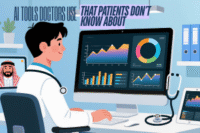Top Cybersecurity Threats 2025 – A Complete Breakdown
Published: 21 Jun 2025
Cyber threats are no longer just a possibility-they’re a daily reality. As we step into 2025, these dangers are smarter, faster, and more unpredictable than ever. From AI-driven attacks to deepfake scams, the digital battlefield is evolving.
Whether you’re a business owner, IT professional, or everyday user, staying informed is your first line of defense. This article breaks down the top cybersecurity threats to watch in 2025-so you can stay one step ahead.
1. The Evolving Threat Landscape in 2025
The cybersecurity battlefield has transformed dramatically in recent years-and 2025 is proving to be a defining moment. Cyber threats are no longer limited to basic malware or amateur hackers. Today, attacks are being executed by organized cybercriminal networks, rogue states, and even AI-powered bots.
In 2025, threats are more complex, using multi-layered tactics that bypass traditional defenses. Phishing emails are now hyper-personalized using harvested data and AI. Ransomware groups are operating like businesses, offering “customer service” and demanding cryptocurrency payments. Even smart devices-from home assistants to connected cars-are becoming vulnerable entry points.
What makes this year unique is the sheer scale and variety of attacks. No one is safe-not small businesses, not global enterprises, and certainly not individuals. Cyberattacks are targeting everything: cloud services, supply chains, government systems, critical infrastructure, and personal data.
As we dive deeper into the top threats shaping 2025, one thing is clear: cybersecurity is no longer optional-it’s survival.
2. AI-Powered Cyberattacks and Deepfake Threats
Artificial intelligence is transforming the digital world-and cybercriminals are taking full advantage. In 2025, AI-powered cyberattacks have become one of the most dangerous and difficult-to-detect threats in the cybersecurity space.

Cyber attackers are now using machine learning algorithms to study system behaviors, identify weak points, and launch automated, adaptive attacks. Unlike traditional malware, these AI-driven threats can evolve in real-time, bypassing firewalls, intrusion detection systems, and antivirus software.
One alarming trend is the rise of deepfake technology. Criminals are creating highly convincing fake videos, voice recordings, and images to impersonate CEOs, public figures, or even family members. These deepfakes are being used in phishing campaigns, business email compromises (BEC), and social engineering scams that trick victims into transferring funds or sharing confidential data.
Even more concerning, AI is being used to craft ultra-targeted phishing emails. These messages mimic a user’s tone, writing style, and known contacts-making them nearly indistinguishable from genuine communication.
As AI tools become more accessible and affordable, the line between real and fake continues to blur. Defending against these threats requires advanced detection tools, ongoing awareness training, and a zero-trust approach to all digital communication.
3. Advanced Malware and Ransomware Evolution
Malware has evolved far beyond viruses and trojans. In 2025, cybercriminals are deploying stealthier, smarter, and more adaptive malware strains than ever before-and ransomware remains one of the most profitable weapons in their arsenal.
One major advancement is the rise of fileless malware. Unlike traditional malware, fileless attacks operate directly in memory, leaving no trace on the hard drive. This makes them extremely difficult to detect with conventional antivirus tools. These attacks often exploit trusted system processes, making them nearly invisible until it’s too late.
Another growing threat is cryptojacking-where hackers hijack your device’s processing power to mine cryptocurrency without your consent. It slows down systems, drains resources, and often goes unnoticed for long periods, silently impacting both individual users and enterprise networks.
Meanwhile, ransomware has grown more targeted and strategic. Instead of widespread attacks, cybercriminals now conduct in-depth reconnaissance to identify high-value victims-such as hospitals, schools, and financial institutions. Once inside a system, they encrypt critical data and demand payments in untraceable cryptocurrencies, often accompanied by threats to leak sensitive information if demands aren’t met.
In some cases, ransomware gangs now offer Ransomware-as-a-Service (RaaS), allowing even low-skilled attackers to launch sophisticated campaigns using ready-made kits.
These evolving threats demand multi-layered defense strategies, including behavioral analytics, real-time monitoring, and regular data backups. In 2025, staying ahead means preparing not just for what’s visible-but for the malware hiding in plain sight.
4. Social Engineering 2.0-Phishing, Pretexting & Baiting
In 2025, cybercriminals are no longer just hacking systems-they’re hacking people. Social engineering attacks have entered a new era, where psychological manipulation is sharper, smarter, and significantly harder to detect.
Phishing, once limited to generic scam emails, is now highly targeted and personalized. Known as spear phishing, these attacks mimic legitimate communication from coworkers, banks, or even family members. Cybercriminals use data from social media, public records, and previous breaches to craft messages that feel authentic and urgent-increasing the chance of a victim clicking malicious links or sharing confidential information.
Pretexting has also become more sophisticated. Attackers create elaborate backstories or pose as trusted authorities-like IT staff, HR personnel, or law enforcement. Their goal is to earn the victim’s trust just long enough to extract sensitive data, login credentials, or even access to secure systems.
Then there’s baiting-the digital version of leaving a trap. This tactic tempts victims with something irresistible, like free software, gift cards, or leaked content. Once the victim takes the bait, malware is silently installed, granting the attacker access to the device or network.
The rise of deepfakes and AI-generated voice impersonation has further blurred the line between reality and deception. Some cybercriminals even use live AI chatbots to engage victims in real time, mimicking customer service or technical support.
What makes these attacks dangerous is not just the technology, but how they exploit basic human emotions-curiosity, urgency, fear, or trust. Combating Social Engineering 2.0 requires more than software; it demands employee training, digital skepticism, and strict verification protocols at every level.
5. Targeted Attacks on Critical Infrastructure & Smart Cities
As cities grow smarter and more connected, they also become prime targets for cyberattacks. In 2025, cybercriminals and hostile nation-states are increasingly setting their sights on critical infrastructure-the digital backbone that keeps our societies running.
From power grids and water systems to transportation networks and emergency services, critical infrastructure now depends on interconnected technologies and Internet of Things (IoT) devices. Unfortunately, many of these systems were not built with cybersecurity in mind, making them vulnerable to attack.
One of the most common threats is the Distributed Denial of Service (DDoS) attack. By overwhelming servers with massive volumes of traffic, attackers can shut down essential services like traffic control systems, banking platforms, or emergency communications-causing widespread disruption and chaos.
Injection attacks are another growing concern. In these attacks, hackers exploit weaknesses in the code of public-facing applications (such as databases or web portals), allowing them to insert malicious code, steal data, or gain system access. For example, a simple flaw in a city parking app or a utility billing system can open the door to full-scale system breaches.
Smart cities are especially vulnerable because they rely heavily on real-time data and automation. This includes things like smart lighting, surveillance systems, connected vehicles, and environmental sensors. If compromised, these technologies can be manipulated to cause physical damage, spread misinformation, or even endanger lives.
The growing complexity of these systems-combined with outdated infrastructure and underfunded cybersecurity-makes them an appealing target. In 2025, protecting critical infrastructure requires a blend of robust security protocols, constant monitoring, incident response planning, and cross-sector collaboration.
6. Cloud, IoT, and 5G Vulnerabilities
The shift to a hyper-connected world has brought remarkable convenience-but also a massive expansion of the attack surface. In 2025, vulnerabilities in cloud computing, Internet of Things (IoT) devices, and 5G networks are some of the most exploited entry points for cybercriminals.
Cloud environments now host vast amounts of sensitive data, business operations, and mission-critical applications. But misconfigured storage, weak access controls, and insecure APIs are still common. Attackers often target cloud misconfigurations to gain unauthorized access, deploy malware, or exfiltrate data. Multi-cloud environments add another layer of complexity, making security gaps harder to detect and fix.
The Internet of Things has exploded-from smart home devices and wearable tech to connected medical equipment and factory sensors. Many of these devices lack proper security protocols or receive infrequent updates. Once compromised, they can be used to spy, steal data, or serve as bots in massive cyberattacks. Worse, they often operate unnoticed in the background, making detection difficult.
With the rollout of 5G, data flows faster and wider than ever-but so do threats. The high-speed connectivity of 5G enables real-time communication between billions of devices, but it also introduces new network vulnerabilities, especially at the edge. Cybercriminals can exploit these to intercept data, disrupt services, or bypass traditional perimeter defenses.
What ties cloud, IoT, and 5G threats together is their interconnectedness. A breach in one area often opens pathways to others. Securing these systems requires zero trust architecture, strong authentication methods, constant patching, and proactive threat monitoring.
7. Supply Chain Attacks & Insider Threats
In 2025, cybercriminals aren’t just going after you-they’re going after everyone you depend on. Supply chain attacks have surged in both frequency and sophistication, targeting third-party vendors, contractors, and service providers to gain indirect access to larger, more secure organizations.
These attacks exploit the trust between interconnected systems. A single compromised software update, hardware component, or vendor login can act as a backdoor into an otherwise secure environment. Notable past examples, like the SolarWinds attack, have inspired a new generation of threat actors to adopt this strategy.
What makes supply chain attacks so dangerous is how stealthy and far-reaching they are. Organizations may not even realize they’re under attack until it’s too late-especially when the breach comes through a trusted partner. Attackers can insert malware, steal intellectual property, or quietly monitor systems for months before striking.
Alongside external threats, insider threats remain a persistent danger. Whether intentional or accidental, employees, contractors, or third-party users with access to sensitive systems can pose a serious risk. Insider threats include everything from leaked credentials and unauthorized data sharing to disgruntled employees sabotaging systems.
What’s changed in 2025 is the blending of insider and external threats. Attackers now recruit insiders, bribe vendors, or use phishing to turn legitimate users into unknowing accomplices.
To counter these risks, businesses must adopt strict vendor vetting, real-time access monitoring, least-privilege principles, and robust insider threat detection programs. Trust is no longer enough-continuous verification is essential.
8. Nation-State Cyber Warfare and Global Espionage
Cybersecurity is no longer just an IT issue-it’s a matter of national security. In 2025, nation-state cyber warfare has reached new levels of intensity, with governments using cyber tools as weapons to disrupt economies, steal secrets, and assert global dominance.
Unlike financially motivated hackers, state-sponsored actors often have unlimited time, funding, and resources. Their attacks are stealthy, sophisticated, and aimed at long-term infiltration. These campaigns target critical infrastructure, government agencies, military networks, defense contractors, and even political groups.
Common tactics include Advanced Persistent Threats (APTs)-prolonged, targeted attacks designed to stay hidden while silently extracting valuable information or laying groundwork for future disruption. These aren’t quick hits. They’re patient, strategic invasions carried out by highly trained cyber operatives.
Espionage is a major motive. State-backed hackers steal classified data, intellectual property, trade secrets, and sensitive communications to gain geopolitical or economic advantage. We’ve also seen cyberattacks used to manipulate elections, spread disinformation, and sow political unrest-all without firing a single bullet.
What makes 2025 more alarming is the increasing overlap between state and non-state actors. Some governments covertly hire or protect hacker groups to carry out deniable operations. Others disguise attacks under the mask of “hacktivism” or organized crime.
To defend against nation-state threats, organizations must go beyond basic cybersecurity. This means threat intelligence sharing, cooperation between public and private sectors, global alliances, and cyber-resilience strategies designed to anticipate and withstand even the most persistent threats.
9. Privacy Breaches, Data Theft & Regulatory Pressures
In 2025, data is the world’s most valuable asset-and one of the most targeted. As digital ecosystems expand, so do the risks of privacy breaches and massive data theft. Cybercriminals are constantly seeking ways to steal, sell, or exploit sensitive information for profit or political leverage.
Personal data, medical records, financial credentials, and corporate trade secrets are all at risk. Once stolen, this data often ends up on the dark web, fueling identity theft, fraud, and blackmail. That is why dark web monitoring matters alot now. Data breaches can cost organizations millions-not just in recovery, but in lost trust and legal consequences.
Adding to the pressure are rapidly evolving data protection regulations. Laws like GDPR (Europe), CCPA (California), and other global privacy mandates now demand strict data handling, user consent, and breach reporting practices. In 2025, non-compliance doesn’t just damage your reputation-it can lead to crippling fines and sanctions.
What makes the current landscape more complex is the global nature of digital data. Businesses often operate across borders, making it difficult to comply with overlapping laws. At the same time, regulators are tightening controls, demanding greater transparency and accountability in how data is collected, stored, and protected.
To stay compliant and secure, organizations must adopt privacy-by-design principles, strong encryption protocols, and real-time monitoring to detect unusual access or movement of data. Educating employees on data handling and building a strong incident response plan are no longer optional-they’re mission-critical.
10. The Cybersecurity Talent Gap & Defense Innovations
While cyber threats in 2025 grow more advanced, our ability to fight them is held back by a major challenge: a severe global shortage of skilled cybersecurity professionals. From ethical hackers to threat analysts and security architects, demand is outpacing supply-and the gap is widening.
This talent shortage leaves many organizations vulnerable. With limited teams, it’s difficult to keep up with constant monitoring, incident response, and proactive defense. Small and medium businesses suffer the most, often lacking both resources and specialized staff to implement robust security strategies.
To counter this, companies are investing in automated security solutions, such as AI-driven threat detection, machine learning-based analytics, and intelligent response systems. These tools help identify, isolate, and respond to threats in real-time, reducing dependence on human oversight.
Another emerging defense strategy is the Zero Trust model-where no user or device is automatically trusted, even within the network. Every access request is verified, authenticated, and continuously monitored. This approach helps contain breaches and limit internal movement once an attacker gets in.
Ethical hacking and bug bounty programs are also on the rise, allowing companies to discover vulnerabilities before bad actors do. Meanwhile, cybersecurity education and certifications are expanding globally, encouraging more professionals to enter the field.
The future of defense lies in combining skilled human judgment with smart automation. Bridging the talent gap while embracing innovation will be key to surviving-and thriving-in the hostile digital world of 2025.
Conclusion
Cybersecurity in 2025 is no longer just about firewalls and passwords-it’s about staying one step ahead in an ever-evolving digital war. From AI-driven attacks to deepfake deception and infrastructure sabotage, the threats are smarter, faster, and more personal than ever. But with awareness, innovation, and a proactive approach, we can build resilience against even the most sophisticated cyber risks. The future may be uncertain, but one thing is clear: cyber defense is not optional-it’s essential.
Cybersecurity threats in 2025 include AI-powered attacks, ransomware, deepfakes, IoT vulnerabilities, and nation-state cyber warfare.
AI-driven phishing, ransomware-as-a-service, and supply chain attacks are leading threats. Organizations should adopt zero trust models, continuous monitoring, and employee training.
The Cybersecurity Survey 2025 provides global insights on cyber threat trends, breach statistics, and organizational readiness levels for the year.
Cybersecurity in 2025 covers not only IT systems but also cloud, IoT, 5G, critical infrastructure, and human-centered threats like social engineering.
Deepfakes are being used in scams, impersonation, and fraud, making phishing and social engineering attacks far more convincing and dangerous.
Fileless malware runs in system memory, leaving no files behind, making it invisible to traditional antivirus and difficult to trace.
A lack of skilled professionals leaves gaps in monitoring, response, and defense, increasing the risk of undetected breaches.
AI is used by attackers for automation and precision, while defenders use it for threat detection, behavior analysis, and rapid response.
By using managed security services, updating systems regularly, training staff, and adopting multi-factor authentication.
Zero trust assumes no user or system is trustworthy by default, reducing internal threats and limiting damage from breaches.

- Be Respectful
- Stay Relevant
- Stay Positive
- True Feedback
- Encourage Discussion
- Avoid Spamming
- No Fake News
- Don't Copy-Paste
- No Personal Attacks

- Be Respectful
- Stay Relevant
- Stay Positive
- True Feedback
- Encourage Discussion
- Avoid Spamming
- No Fake News
- Don't Copy-Paste
- No Personal Attacks





